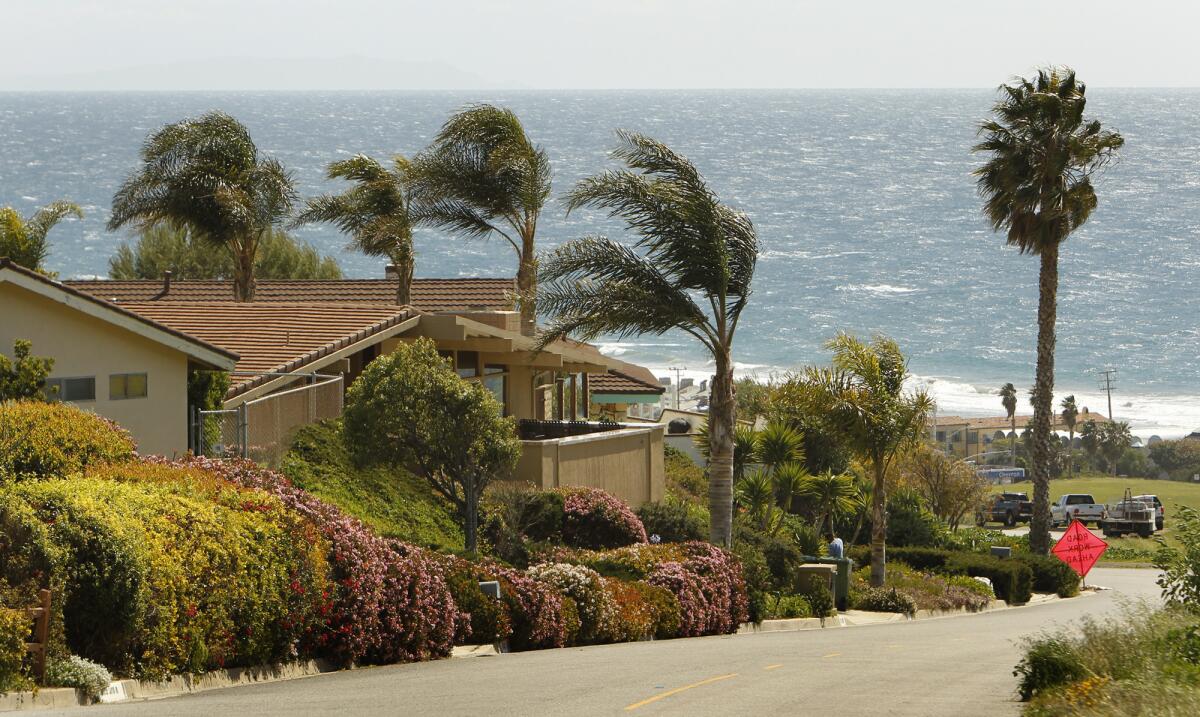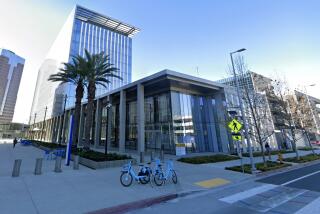Wealthy L.A. areas use far more energy than poor ones

Data shows strong disparities in energy consumption by household income level. Malibu, pictured here, ranked the highest per-capita in residential energy consumption.
- Share via
Wealthier neighborhoods use far more energy per capita than their low-income counterparts, but the biggest energy users overall in Los Angeles County are commercial and industrial businesses.
Those are among the findings of a new analysis of energy consumption that provides the most detailed map of electricity use in the region to date. UCLA’s California Center for Sustainable Communities used data from the Los Angeles Department of Water and Power and other municipal and private utility companies for the period from 2006 to 2010.
------------
FOR THE RECORD:
Energy consumption: In the Oct. 1 California section, an article about a new energy consumption mapping website said that per-capita consumption in the city of Avalon was 5 BTU in 2010. The correct number is 5 million BTU.
------------
The resulting online Energy Atlas site breaks down the data by city and neighborhood and includes information on electricity usage by different types of buildings. Public officials say the data could help them develop more targeted and effective conservation programs that would help reduce greenhouse gas emissions.
“Now we can be really intelligent about those types of policies,” said Howard Choy, general manager of the county’s Office of Sustainability, which partially funded the project.
The city of Los Angeles, which accounted for 35% of energy use in the county, according to the site, is using the data to craft an energy efficiency policy for existing buildings.
The policy has been in the works for nine months and is close to completion, said Matt Petersen, chief sustainability officer for Mayor Eric Garcetti.
Petersen said the data showed it made the most sense to concentrate city conservation efforts on large commercial, industrial and multi-family apartment buildings. Single-family homes make up 69% of all parcels within the city, but they account for only about 25% of energy use.
On the other hand, buildings of 10,000 square feet or more constitute just 4.4% of properties in the city, but account for 47% of the energy used.
“We need to really target and focus on those buildings that are the biggest users,” Petersen said. The new measures by the Garcetti administration will include a mix of incentives and mandates for building owners to upgrade their facilities to save energy.
“It makes sense to concentrate on the big users first” and increases the odds of achieving significant reductions in power use, said Stephanie Pincetl, director of the California Center for Sustainable Communities.
But she also hopes officials can restructure utility rates to ensure that the biggest residential users pay more than they do now.
The data showed strong disparities in consumption by household income level. Cities with the highest per-capita residential energy consumption tended to be wealthy coastal cities: Malibu topped the list, with per-capita consumption of 95 million BTU in 2010, followed by Hidden Hills, Rolling Hills, Westlake Village and Beverly Hills.
At the bottom of the list was the city of Avalon, on Catalina Island, where per-capita consumption was 5 BTU. For the most part, the other cities with the lowest per-capita consumption were poor and concentrated in the southeast part of the county, including Huntington Park, Bell and Cudahy.
------------
FOR THE RECORD
12:15 p.m.: This article states that per capita consumption in the city of Avalon was 5 BTU in 2010. It was 5 million BTU.
------------
Choy said county officials will use the data to work with the county’s 87 incorporated cities outside the city of Los Angeles and attempt to develop a coordinated energy-saving plan.
Municipally owned utilities in Azusa, Cerritos, City of Industry, Pasadena and Vernon did not provide data and were not included in the analysis.
ALSO
L.A. County forms health ‘super agency,’ but some fear it will be unwieldy
Can drastically reduced nicotine take the ‘hook’ out of cigarettes?
Shell to spend $55 million to clean soil at old South Bay rubber plant







